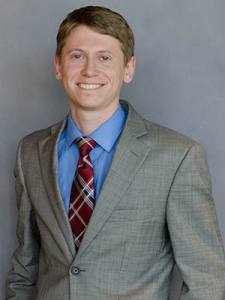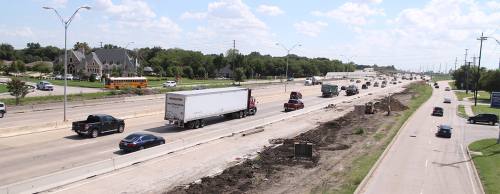The end is in sight for the US 75 construction project that will resolve a traffic bottleneck through Allen and Fairview.
Drivers can expect congestion relief early next year after crews complete the $47.5 million project to install a fourth lane on each side of US 75.
However, county and regional officials say the expansion will not be enough to meet the rapidly growing area’s long-term transit needs.
Michael Morris, director of transportation for the North Central Texas Council of Governments, said there will be significant improvement in the short-term on US 75, but “in the long term, it will deteriorate again.”
The Texas Department of Transportation expects to finish the US 75 project by January, but city of Allen Director of Engineering Chris Flanigan cautions the complex project could take longer.
In the meantime, the ongoing project is also reshaping the frontage roads, intersections and ramps lining the portion of US 75 running through Allen and Fairview, causing intermittent traffic slowdowns on the access road and side streets.
Crews are building new entrance and exit ramps along the roadway. The new ramp setup should be safer and more efficient, Flanigan said.
“[Drivers] used to exit real close to the intersection,” Flanigan said. “So in effect, when there was a problem at the intersection, those cars stacked up and even potentially backed up onto the high-speed main lanes.”
The project has also added turn lanes and traffic signal and sidewalk improvements where the US 75 frontage road meets Stacy Road and McDermott and Bethany drives.
Even with all the progress, local and state officials are discussing the future of the commuter highway already brimming with congestion problems that are only mounting by the decade.
A corridor’s future
Collin County officials expect the county’s rapidly expanding population—at nearly 1 million and climbing—to double by the time the area is fully built out.
The county may have to get creative to address the growth, Collin County Judge Keith Self said.
“The model of six-lane thoroughfares that has happened in this county for so long is inadequate for 2 million-plus people,” Self said. “We have got to change our thinking, look further into the future and look at build-out.”
After the fourth lane is added, TxDOT plans to initiate another project changing the existing high-occupancy vehicle lanes to “peak-hour” lanes, which would make US 75 a 10-lane highway during the busiest travel times. But this proposal is still in preliminary stages and would have to be coordinated with federal authorities, according to TxDOT Dallas District spokesperson Ryan LaFontaine.
Looking ahead, LaFontaine and other officials said there is no consensus among local governments about whether to further widen US 75 after those peak-hour lanes are added.
“Our cities want US 75 to remain the commuter highway, so there are no plans at this point to expand those lanes beyond those five lanes through Collin County,” Self said.
Without long-term expansion of US 75, local governments are exploring the possibility of adding another north-south thoroughfare to the east of US 75, Morris said.
“You have a lot of people trekking over to [US] 75, going a short distance and then getting off,” Morris said. “So we have an inadequate gridded thoroughfare system in Collin County, and we’re trying to build on that to keep the short trips off of [US] 75.”
Either way, Morris said, meeting the transportation demands of the highway corridor will require a comprehensive approach—not just expansion of the main freeway.
Impact close to home
[polldaddy poll=9509416]
Although TxDOT is responsible for the project, Flanigan and other city officials have been working closely with state authorities to offer local feedback and keep the public informed with updates on related slowdowns.
“When you’ve got a major highway running through our community, it stands to reason that the community would have a say in the project,” Flanigan said.
The city has recommended aesthetic concepts that TxDOT has installed on the new sound walls, including the city of Allen logo.
Local input has also resulted in TxDOT approving lane-designation signals above the freeway that will help guide traffic near the city’s busiest intersection where Stacy Road meets US 75, Flanigan said.
And while the city is working to minimize the effects of the construction, officials acknowledge it will continue to inconvenience drivers and business owners through the end of the project in early 2017.
“Construction is hard; there’s no doubt about it,” Self said. “Small businesses that are located near intersections being redone or lanes being added [have it] hard. You just have to hold on and get through it.”






